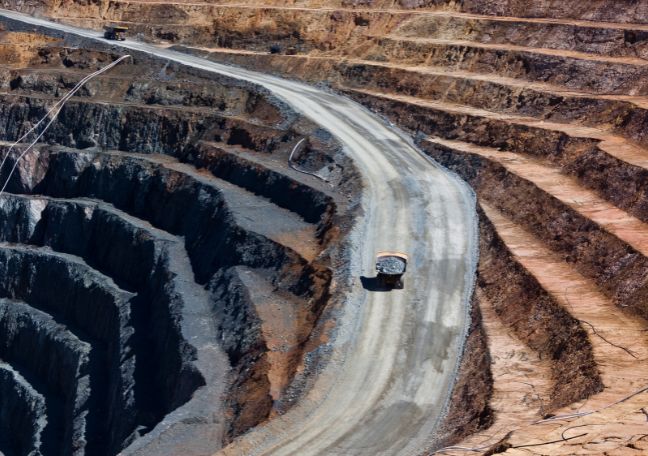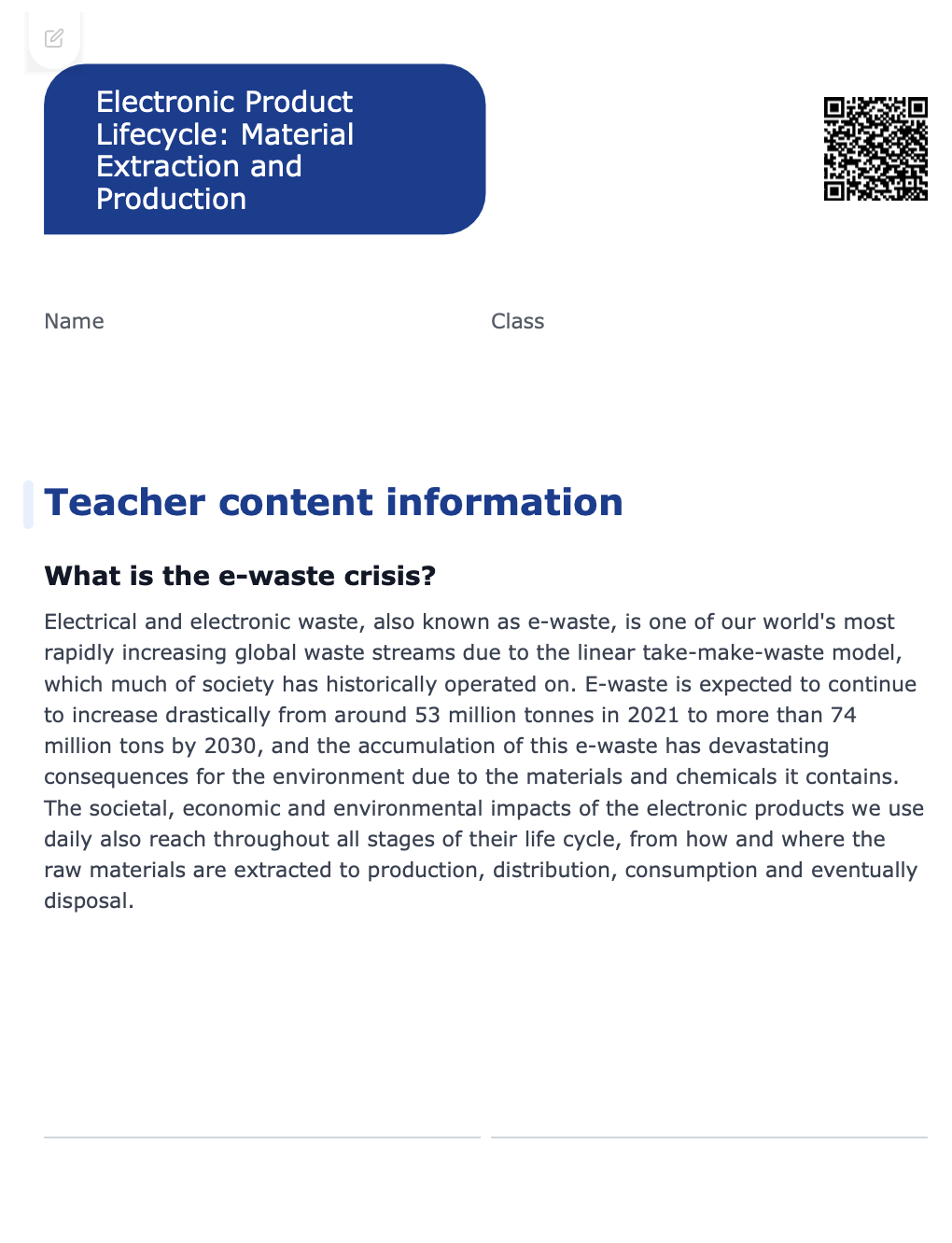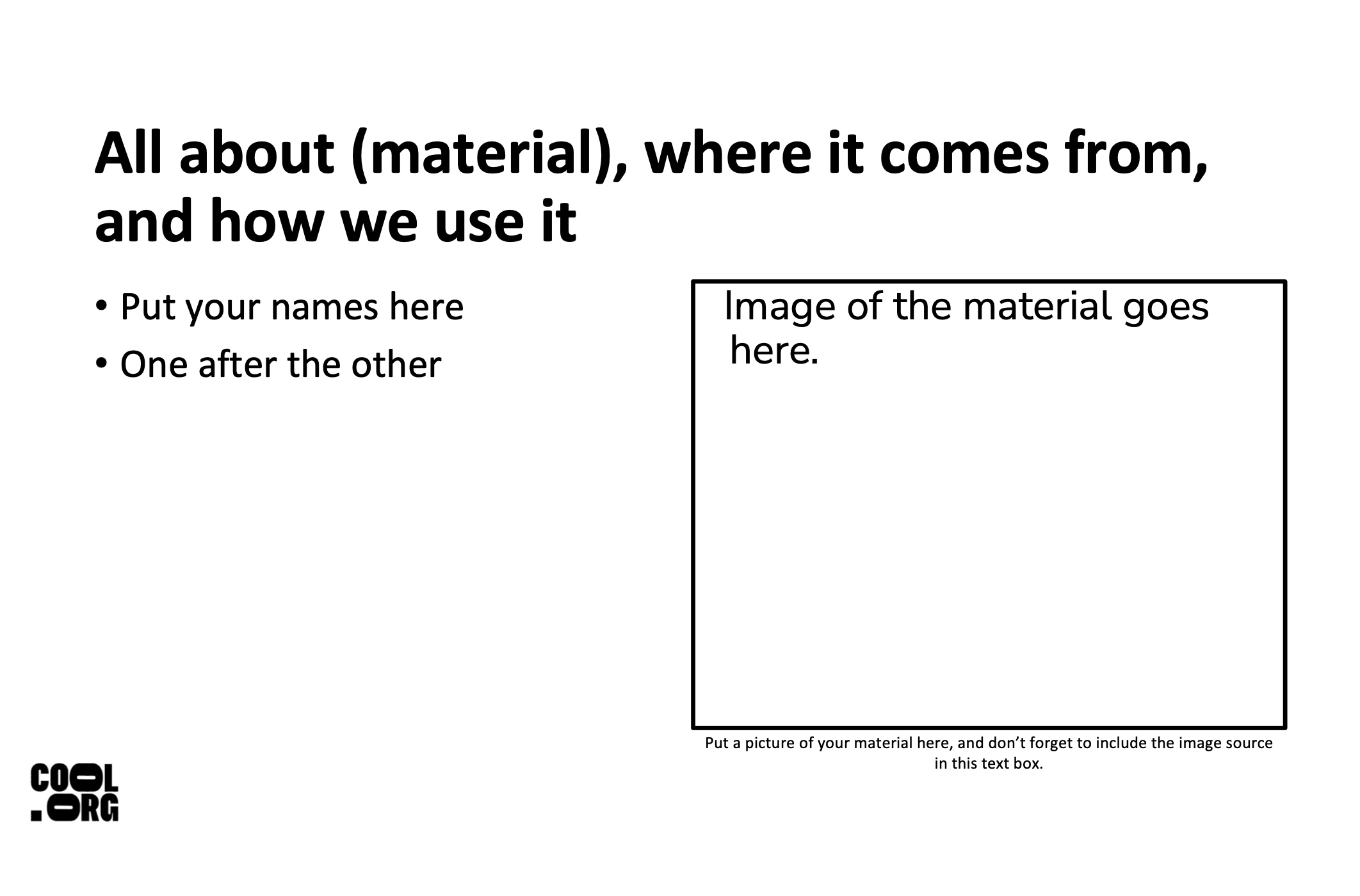Lesson summary
Students will explore the issue of e-waste and the impacts of the production of e-products on places and people worldwide by understanding the raw material extraction and production processes underpinning their devices' origins.
Learning intentions:
Students will...
- research the environmental, social and economic impacts of resource extraction to create e-products.
Success criteria:
Students can...
- explain the extraction process of materials used in e-products
- discuss the environmental, social and economic impacts of this process
- critically analyse sources of information for bias or misrepresentation
Lesson guides and printables
Curriculum links
Select your curriculum from the options below.
Lesson details
Skills
This lesson is designed to build students’ competencies in the following skills:
- critical thinking
- collaboration
- communication
- curiosity
- digital literacy
- ethical understanding
- global citizenship
Curriculum Mapping
Australian Curriculum (v9.0) content description: Year 9 Geography
The impacts of the production and consumption of goods on places throughout the world and strategies to manage sustainability in these places (AC9HG9K08)
General capabilities: Critical and Creative Thinking, Ethical Understanding
Syllabus outcomes: GE4-2
Cross-curriculum priority: Sustainability
Relevant parts of Year 9 Geography achievement standards: Students explain the effects of human activity on environments, and the effects of environments on human activity, and they analyse the interconnections between people and places and environments. They identify and explain how these interconnections influence people, and change places and environments.
Level of teacher scaffolding: Medium - guide online research.
UN Sustainable Development Goals
UN SDG 12: Ensure sustainable consumption and production patterns
- Target 12.5: By 2030, substantially reduce waste generation through prevention, reduction, recycling and reuse.
- Target 12.8: By 2030, ensure that people everywhere have the relevant information and awareness for sustainable development and lifestyles in harmony with nature.
Resources Required
- Device capable of presenting audiovisual recordings
- Student devices with internet access
- Student Worksheet
Additional Info

This Closing the E-Loop unit has been developed in partnership with Comsol, a manufacturer, importer and distributor of electronics, who use a step-by-step approach to sustainability that aims to establish a sustainable, environmental and socially-supporting ecosystem for technology products and services. A key pillar of Comsol’s overarching framework is education. They believe that knowledge-sharing about the electronic waste crisis, sustainability and closed-loop solutions for electronic products provide opportunities for society to speed up the transition to a circular economy.
You can access all expert interviews and video content created for this unit through Vimeo. If you would like more information about the main topics and areas covered by these interviews, we have categorised them to make them easier to find and use in whatever context you see fit!





Welcome back!
Don't have an account yet?
Log in with:
Create your free Cool.org account.
Many of our resources are free, with an option to upgrade to Cool+ for premium content.
Already have an account?
Sign up with:
By signing up you accept Cool.org's Terms and Conditions(Opens in new tab) and Privacy Policy(Opens in new tab).